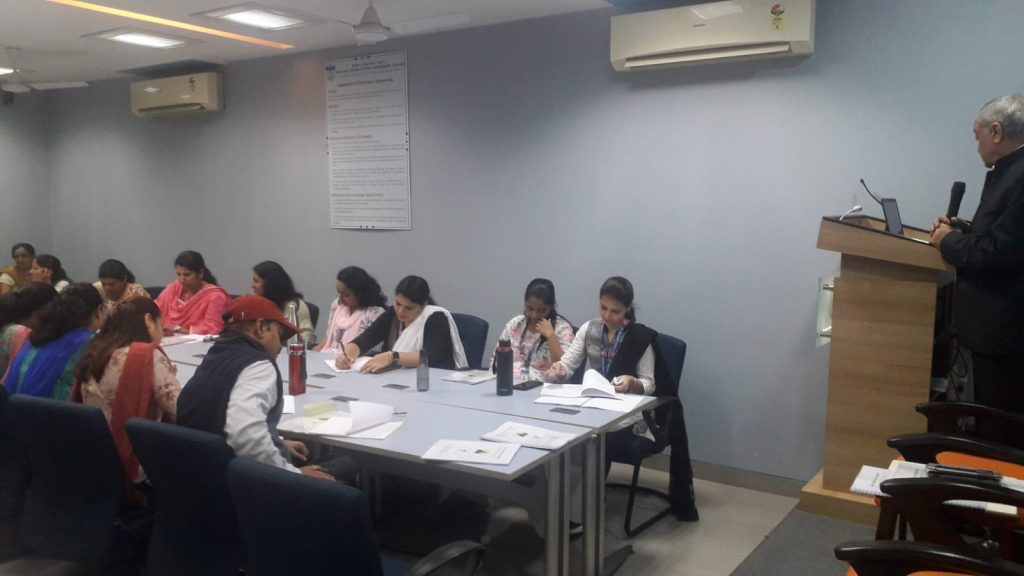1) What are research findings of Stage Fright?
Stage fright, also known as performance anxiety, is a common phenomenon that affects many individuals across various performance contexts, including public speaking, musical performance, acting, and sports. Research into stage fright has yielded several key findings:

Prevalence and Demographics
- Commonality: Stage fright is widespread, with studies indicating that it affects a significant portion of the population. It is estimated that about 75% of people experience some degree of anxiety when speaking in public.
- Demographics: It affects individuals across all ages and professional backgrounds. However, certain populations, such as students, performers, and those new to a field, may report higher levels of anxiety.
Symptoms and Manifestations
Physical Symptoms: Common physical symptoms include sweating, trembling, dry mouth, rapid heartbeat, nausea, and dizziness. These symptoms are part of the body’s fight-or-flight response.
Cognitive Symptoms: Individuals may experience negative thoughts, fear of failure, self-doubt, and difficulty concentrating.
Behavioral Symptoms: Avoidance of performance situations, excessive preparation, or, conversely, inadequate preparation due to fear.
- Causes and Contributing Factors
Biological Factors: Genetics and brain chemistry can play a role in an individual’s predisposition to anxiety. The amygdala, which processes fear, is often more active in those who experience higher levels of anxiety.
Psychological Factors: Personality traits such as perfectionism, low self-esteem, and high levels of neuroticism are associated with increased performance anxiety.
Environmental Factors: Past experiences, especially negative ones, can contribute to future anxiety. High stakes and pressure from peers, family, or audience can exacerbate symptoms.
- Impact on Performance
Negative Impact: High levels of anxiety can impair performance by causing cognitive overload, reducing working memory capacity, and leading to errors or omissions.
Moderate Anxiety: Some research suggests that a moderate level of anxiety can enhance performance by increasing focus and motivation, often referred to as the Yerkes-Dodson law. - Intervention and Management Strategies
Cognitive-Behavioral Therapy (CBT): CBT is one of the most effective treatments for stage fright. It involves restructuring negative thought patterns and gradually exposing individuals to anxiety-provoking situations.
Medication: Beta-blockers and anti-anxiety medications can be used to manage physical symptoms, though they are typically recommended for severe cases and not as a first-line treatment.
Relaxation Techniques: Breathing exercises, progressive muscle relaxation, and mindfulness meditation can help reduce physical symptoms of anxiety.
Performance Preparation: Thorough preparation and rehearsal can increase confidence and reduce anxiety. Visualization and mental practice are also beneficial.
Support Systems: Peer support, coaching, and mentoring can provide reassurance and constructive feedback, reducing feelings of isolation and fear.
- Recent Research Trends
Neuroscientific Approaches: Studies using neuroimaging techniques are exploring how brain activity changes in anxious performers and how interventions can modulate this activity.
Technology-Based Interventions: Virtual reality (VR) exposure therapy is emerging as a tool for helping individuals practice performances in a controlled, simulated environment.
Positive Psychology: Focusing on strengths, resilience, and positive emotions is gaining attention as a way to build confidence and reduce anxiety.
2) Causes of Stage Fright?
Stage fright, also known as performance anxiety, can be triggered by a variety of psychological, physiological, and situational factors. Here are some common causes:

Fear of Judgment or Rejection: Concern about how the audience will perceive and judge the performance is a primary cause of stage fright. This fear can stem from a desire for approval and a fear of negative evaluation.
Lack of Preparation: Insufficient practice or feeling unprepared can heighten anxiety. Knowing one is not fully ready for the performance can lead to increased nervousness.
Perfectionism: High personal standards and a fear of making mistakes can contribute to anxiety. Perfectionists may worry excessively about delivering a flawless performance.
Previous Negative Experiences: Past experiences of poor performances or negative feedback can create a lasting fear of similar situations, leading to heightened anxiety in future performances.
Biological Factors: Physiological responses to stress, such as increased adrenaline, heart rate, and cortisol levels, can cause physical symptoms of anxiety like trembling, sweating, and a racing heart.
High Stakes: The perceived importance of the performance can influence anxiety levels. Higher stakes can increase pressure and lead to more significant anxiety.
Lack of Experience: Inexperienced performers may feel more anxious due to unfamiliarity with the performance environment and the process.
Social Anxiety: Individuals who generally experience social anxiety may be more prone to stage fright, as performing in front of others can be particularly challenging.
Self-Doubt: Low self-confidence and self-esteem can lead to doubts about one’s abilities, increasing anxiety about performing well.
Audience Size and Composition: The size and nature of the audience can impact anxiety levels. Performing in front of a large, unfamiliar, or highly critical audience can be more intimidating.
3) How to prevent Stage Fright?
Stage fright, or performance anxiety, is a common experience that can be managed through various strategies. Here are some effective methods to prevent and reduce stage fright:

Preparation
Practice Regularly: The more familiar you are with your material, the more confident you will feel. Rehearse in front of a mirror, record yourself, or perform for friends or family.
Know Your Venue: Familiarize yourself with the performance space. If possible, visit the venue beforehand to get a sense of the layout and acoustics.
Visualize Success: Spend time imagining yourself giving a successful performance. Visualization can help build confidence and reduce anxiety.
Physical Techniques
Deep Breathing: Practice deep breathing exercises to calm your nervous system. Inhale deeply through your nose, hold for a few seconds, and exhale slowly through your mouth.
Progressive Muscle Relaxation: Tense and then relax different muscle groups in your body. This can help reduce physical tension caused by anxiety.
Exercise: Engage in regular physical activity to reduce overall stress levels and improve your mood.
Mental Techniques
Positive Self-Talk: Replace negative thoughts with positive affirmations. Remind yourself of past successes and focus on your strengths.
Stay Present: Focus on the present moment rather than worrying about the future or dwelling on past mistakes. Mindfulness techniques can help you stay grounded.
Set Realistic Goals: Aim for progress, not perfection. Setting achievable goals can help reduce pressure and build confidence.
Practical Tips
Arrive Early: Give yourself plenty of time to settle in and prepare before your performance. Rushing can increase anxiety.
Connect with the Audience: Make eye contact and engage with your audience. Remember, they are there to support you.
Use Notes Wisely: If appropriate, have notes or an outline to refer to during your performance. This can serve as a safety net and boost your confidence.
Long-Term Strategies
Perform Regularly: The more you perform, the more comfortable you will become. Seek out opportunities to practice in low-stakes environments.
Seek Feedback: Constructive feedback from trusted individuals can help you improve and build confidence over time.
Professional Help: If stage fright is significantly impacting your life, consider seeking help from a therapist or coach who specializes in performance anxiety.
Immediate Pre-Performance Tips
Warm-Up: Do vocal or physical warm-ups as appropriate for your performance.
Stay Hydrated and Eat Well: Maintain a balanced diet and stay hydrated to keep your energy levels up.
Dress Comfortably: Wear clothes that make you feel confident and comfortable.
4) How to practice your speech before facing the audience?
Practicing your speech before facing an audience is crucial for delivering a confident and effective presentation. Here are some steps and tips to help you practice effectively:

- Understand Your Content
Know Your Material: Make sure you understand your speech thoroughly. Know the key points, the structure, and the flow of your presentation.
Organize Your Notes: Use cue cards or an outline to help you remember the main points. Highlight key phrases or concepts that are essential to your speech. - Practice Out Loud
Rehearse Verbally: Speak out loud as if you are presenting to an audience. This helps you get used to the sound of your own voice and the rhythm of your speech.
Use a Mirror: Practice in front of a mirror to observe your body language and facial expressions. Ensure your non-verbal communication is consistent with your message. - Record Yourself
Video Recording: Record your practice sessions with a camera or smartphone. Watch the recordings to identify areas for improvement in your delivery, gestures, and posture.
Audio Recording: Recording just your voice can help you focus on your vocal delivery, including pace, tone, and clarity. - Get Feedback
Practice with Friends or Family: Present your speech to friends or family members and ask for constructive feedback.
Join a Group: If possible, join a public speaking group like Toastmasters where you can practice in front of an audience and receive feedback. - Simulate the Environment
Practice in the Venue: If you can, practice in the actual venue where you will be presenting. Familiarize yourself with the space, the podium, and any equipment you will use.
Use Visual Aids: Practice with any slides, props, or other visual aids you plan to use. Ensure you know how to operate them smoothly. - Focus on Timing
Time Your Speech: Use a timer to ensure your speech fits within the allotted time. Adjust your content as needed to avoid running over or under time.
Pace Yourself: Practice speaking at a steady pace. Avoid rushing through your speech; instead, speak clearly and deliberately. - Refine Your Delivery
Work on Intonation: Vary your pitch and tone to keep the audience engaged. Avoid monotony by emphasizing key points and using expressive speech.
Pause for Effect: Use pauses strategically to emphasize points and give your audience time to absorb information. - Manage Nervousness
Practice Relaxation Techniques: Use deep breathing, visualization, or other relaxation techniques to manage anxiety.
Positive Visualization: Imagine yourself giving a successful speech and receiving positive feedback. - Review and Revise
Continuous Improvement: After each practice session, review your performance and make necessary adjustments. Focus on areas where you feel less confident.
Adapt Based on Feedback: Incorporate the feedback you receive from others to improve your speech. - Practice Regularly
Consistent Practice: Rehearse regularly leading up to the presentation day. Consistency helps build confidence and reduces last-minute anxiety.
Thanks for reading.








